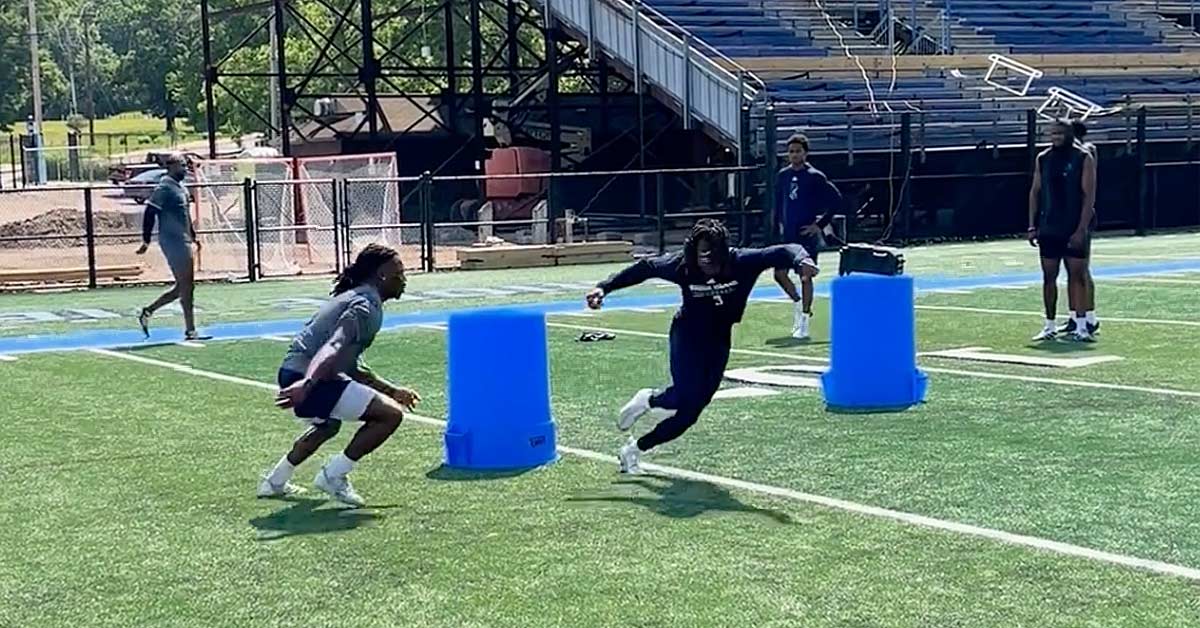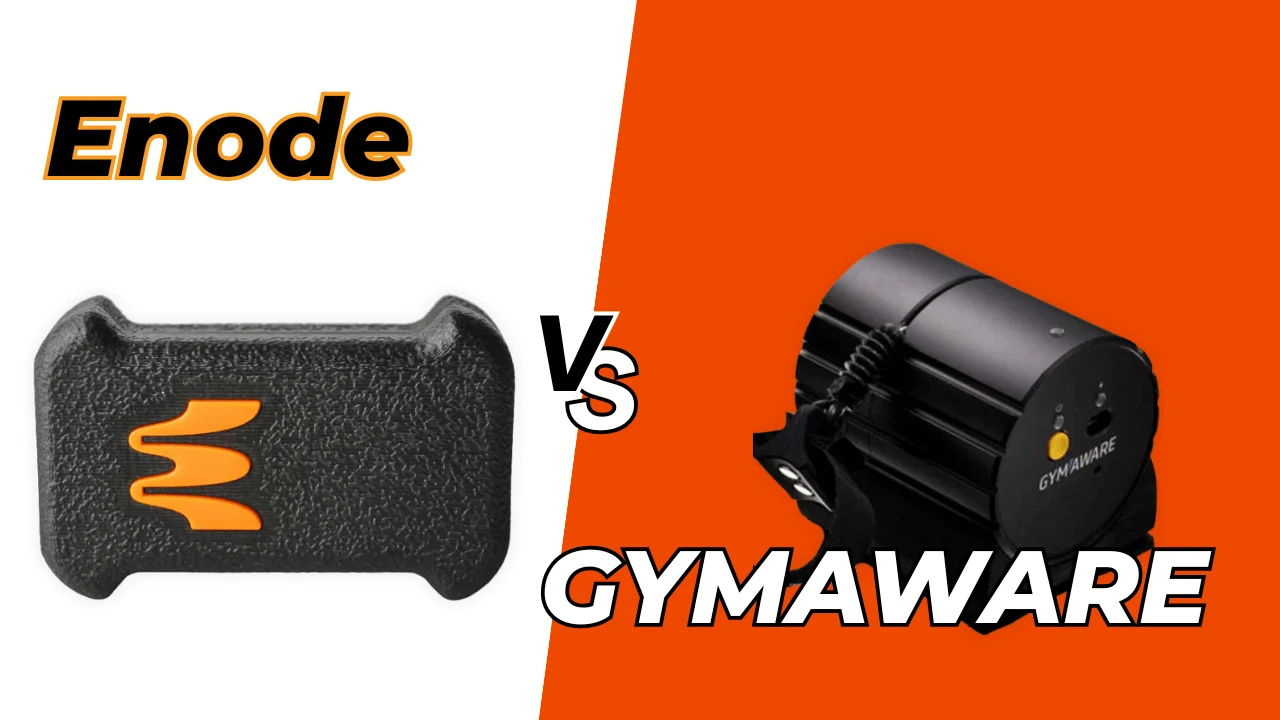Sport is simply aggressive problem-solving performed at high speeds. As strength and conditioning professionals, it is our responsibility to help athletes physically develop the tools needed to solve these in-game problems. While the field has done a good job of developing athletes’ strength, speed, and power, we recognize that there’s room for growth. Our focus must expand to teach athletes not just how to wield these tools but precisely when and how to apply them in the dynamic context of sports.
In the heat of the game, athletes are faced with split-second decisions that demand tailored movement solutions. These solutions are based on the information they gather from their surroundings and their own abilities. By creating drills that mirror real-game situations, coaches can enable athletes to hone their information-processing skills and improve those crucial problem-solving capabilities.
An all-too-common scenario we encounter is the “big fish in a small pond” phenomenon. Although a star athlete may succeed at a lower level by simply being physically dominant compared to their competition, their skill set quickly becomes limited as they climb the ranks to a high level of play. They can no longer simply run around or over an opponent. While this adjustment period can be difficult, providing these athletes with opportunities to work through new movement solutions in a safe learning environment can help them bridge the gap.
In invasion sports (e.g., football, lacrosse, soccer, hockey), two fundamental movement solutions are constantly in demand:
- Creating space for offense.
- Closing space for defense.
Offensive players seek to get themselves or their teammates open, establish room for attacks, evade defenders, or maintain possession. On the other hand, defensive players strive to restrict an offensive player’s movement, maintain optimal positioning, and protect the goal or designated area.
[adsanity align=’aligncenter’ id=14422]
The Distance Between Objects
When progressing drills and games to create and close space, the elements we control as coaches are spacing and complexity. The greater the space, the more room the offensive players will have to create, and the harder it will be for the defenders to close it. The greater the complexity (think scenarios, obstacles, and multiple opponents), the more difficult the decision-making process for both sides.
When progressing drills and games to create and close space, the elements we control as coaches are spacing and complexity, says @ScottLeech72. Share on XThe first drill in our series is a simple faceguard drill. Starting face to face (offense looking at the coach, defender with his back to the coach), the offensive player will be given a direction to run by the coach, quickly create space from their defender, and get open to catch a ball. The defender must react to the offensive player’s movement and prevent the ball from being caught.
For our football players, this is a WR versus a DB. For our basketball, lacrosse, and soccer players, this is beating man coverage. Six to 10 athletes create a good ratio between work and rest within this drill. For larger groups, simply set up multiple groups and have one athlete throw the ball when they are not in. The limited spacing allows for simple movement decisions to be made before moving to more advanced drills.
Video 1. Faceguard drill.
The second drill in this progression is the “1v1 in the box” drill. Set up the box for whatever distance you require (typically, we use 5-, 10-, and 15-yard boxes). The offense and defense will stand back-to-back in the center of the box. On the coach’s “Go!” signal, both players will go around either of the two cones on their sides and reenter the drill.
The 1v1 in the box drill does a phenomenal job of increasing the space the offensive player can use to make a move while also teaching defenders how to reduce that space with angles and leverage. Share on XThe offensive player’s objective is to make it through the far side of the box without getting tagged. The defender is looking to make a two-hand tag before the offensive player wins. This drill does a phenomenal job of increasing the amount of space the offensive player can now use to make a move while also teaching defenders how to reduce that space with angles and leverage.
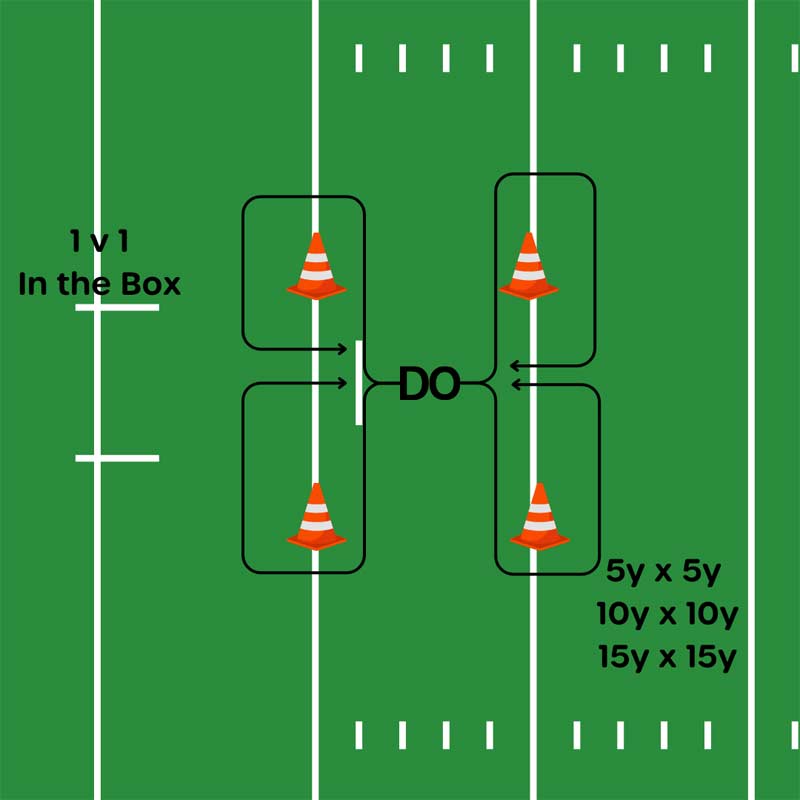
Video 2. 1v1 in the box.
A third progression in our create and close space series is adding obstacles to our 1v1 box drill. Obstacles (like the trash can in the next video demo) act as other bodies that would typically be out on the lacrosse field or basketball court. Opponents stand on opposite corners, perform a burpee on the coach’s “Go!” call, and then enter the box and look to score or get a stop.
For coaches who use a point system for off-season competitions, this is a great opportunity to add to your point systems. A two-hand tag within the box is a point for the defensive group. An untouched score (finishing through the far side of the box) by the offensive player is worth one point for their side. We typically keep track of points during an 8–10-minute period, and the losing side has a consequence at the end.
In the game, offensive players need to process how they’ll use the obstacle to their advantage based on what the defender is doing and how they feel about their own given movement solutions. A speedy wide receiver may try to race to the corner, whereas a shiftier player may use a redirect around a barrel to hopefully make their defender miss.
For the defender, the amount of information processing must increase, but they are not given any more time to do so. The defender must assess the field setup, their opponent and their potential movement strategy on the other side, and their own given ability to determine how to put themselves in the best position to make a play.
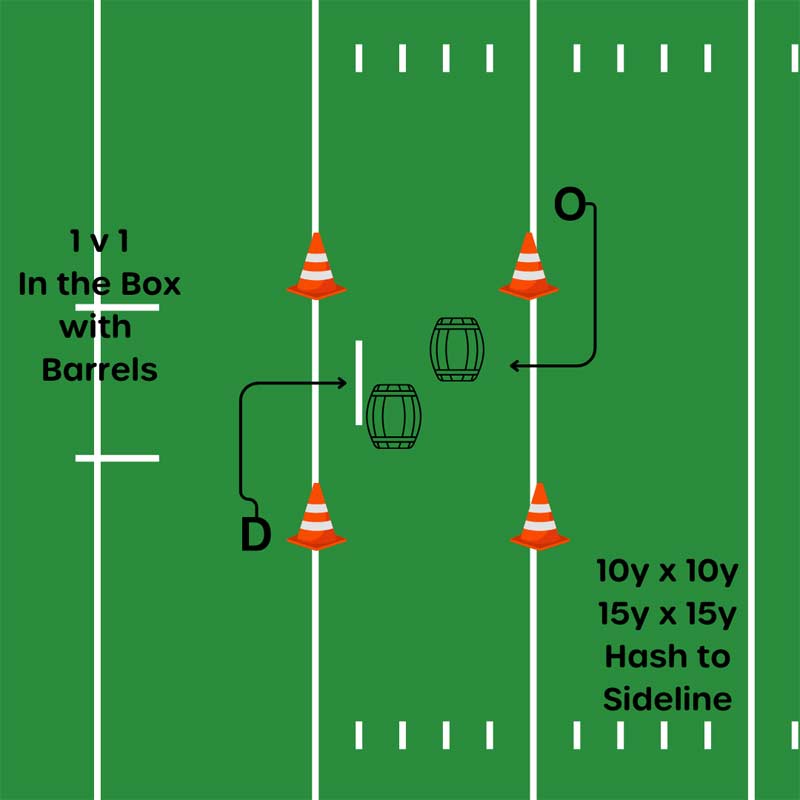
Video 3. 1v1 in the box with obstacles.
The last phase of our create and close space series is a “2v1 in the box” drill. To perform this drill, one offensive player is at each corner of the offensive side. One defender has their back to the offense, standing in the middle of the defensive end of the box. On the coach’s “Go!” call, one offensive player is given a ball to signify who is the carrier. The player who doesn’t receive the ball immediately becomes the live obstacle. The defender must work around the obstacle to make a two-hand tag before the offensive player scores.
Having a live obstacle instead of a static one is the next level of complexity within the create and close space drills. Defenders need to not only process all the same information they’ve had to process up to this point but also what the live obstacle is doing to them. This drill increases the difficulty for the offensive player by eliminating their ability to preplan their attack. The offensive player needs to read what their live obstacle is doing and then make the best movement decision that presents itself.
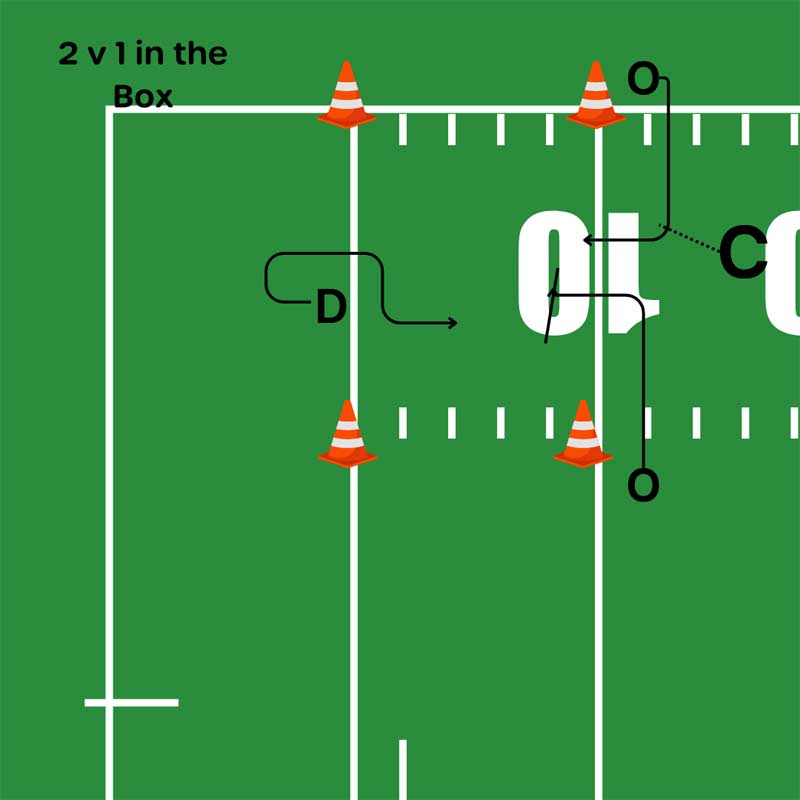
Video 4. 2v1 in the box
Big Fish, Bigger Pond
At the FCS level, the incorporation of these drills and their progressions has played a small role in the success of our football program over the past three seasons. Since including these drills, the Rhode Island Football program has had 17 wins (and counting)—more than the previous six years combined. Consistently putting our players through these drills has helped develop decision-making skills on both sides of the ball, increased “game speed,” and injected competition and fun into our off-season and summer training.
Consistently putting our players through these drills has helped develop decision-making skills on both sides of the ball, increased game speed, and injected fun into our off-season & summer training. Share on X
[adsanity align=’aligncenter’ id=11163]
We’ve explored the importance of creating and closing space in sports like football, lacrosse, soccer, and hockey. We’ve taken you through a series of drills designed to challenge athletes, helping them think fast and make the right moves during a game. These drills go beyond physical training; they enhance athletes’ abilities to make smart decisions in the heat of the moment.
Remember, great athletes aren’t just physically fit; they’re also sharp problem-solvers. As coaches, we have the power to shape athletes who excel not only in athleticism but also in sport skills.
Since you’re here…
…we have a small favor to ask. More people are reading SimpliFaster than ever, and each week we bring you compelling content from coaches, sport scientists, and physiotherapists who are devoted to building better athletes. Please take a moment to share the articles on social media, engage the authors with questions and comments below, and link to articles when appropriate if you have a blog or participate on forums of related topics. — SF

